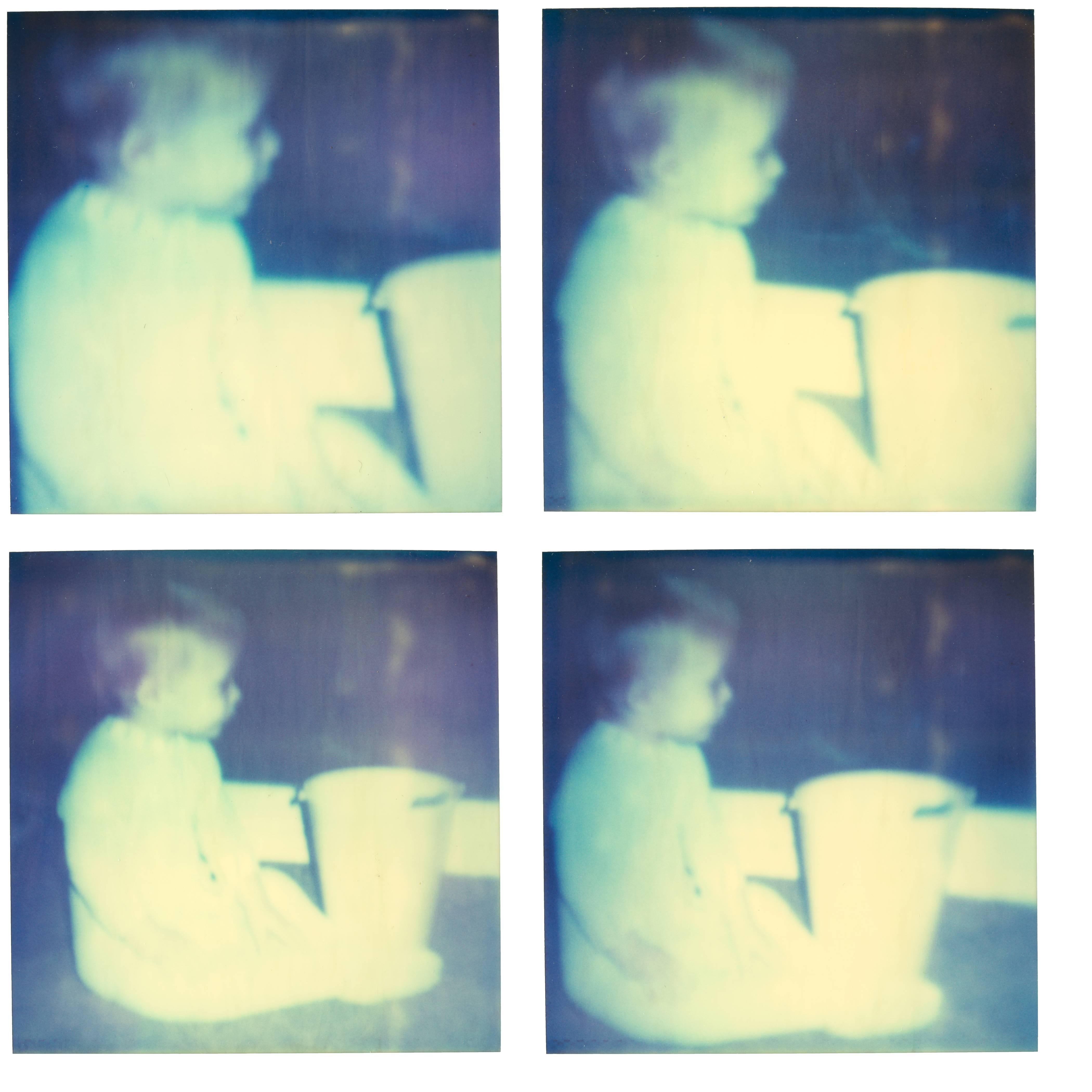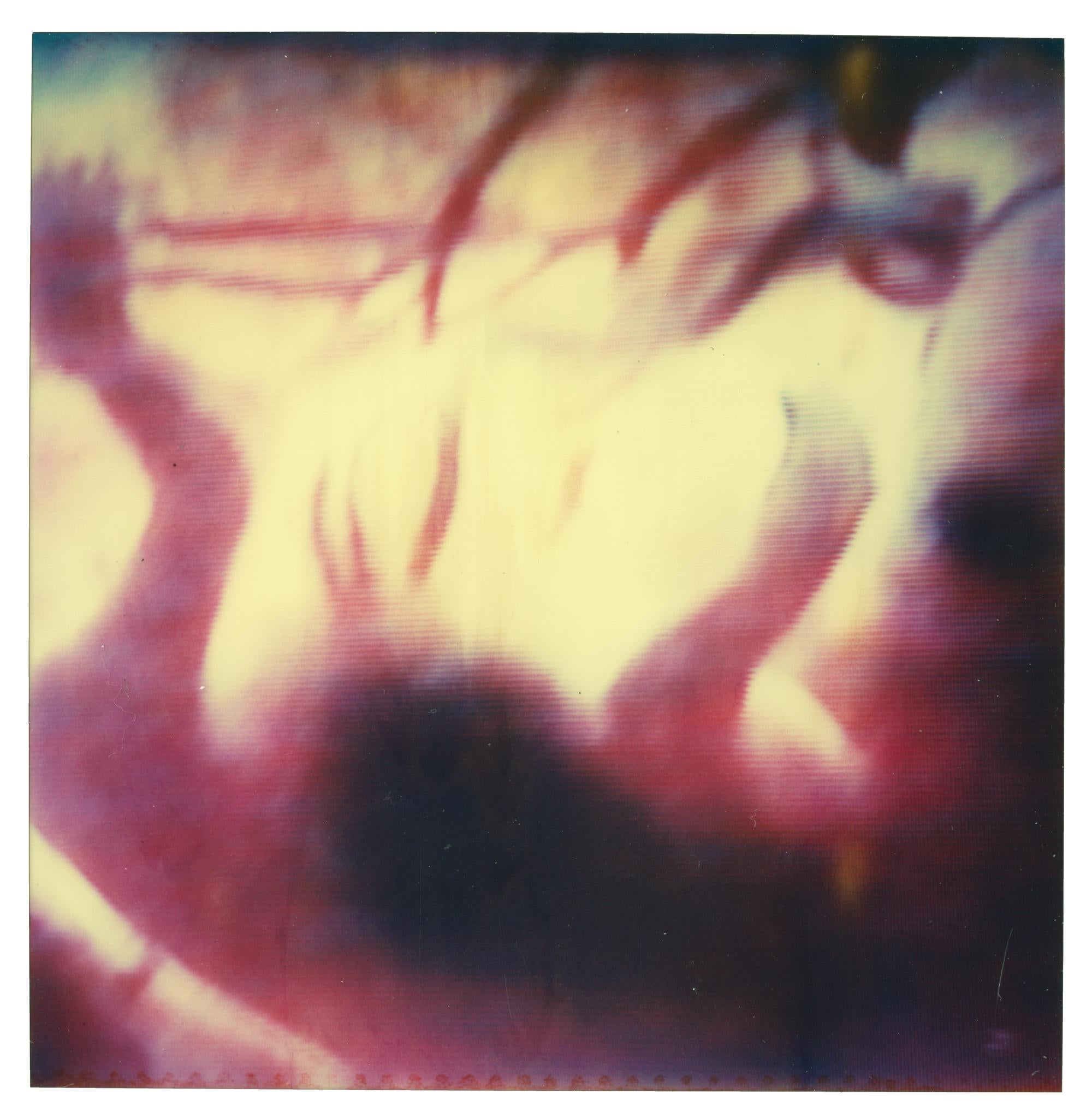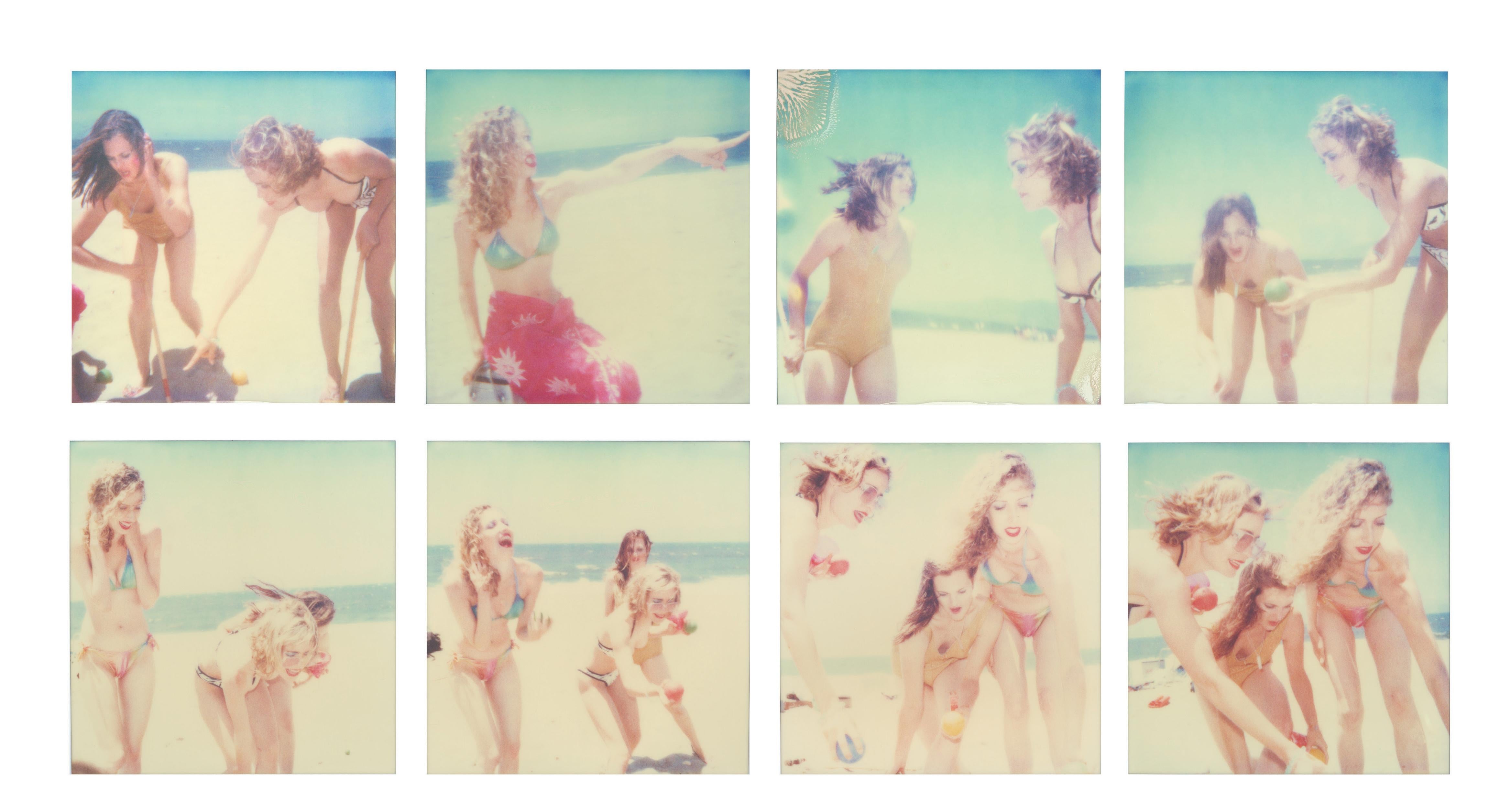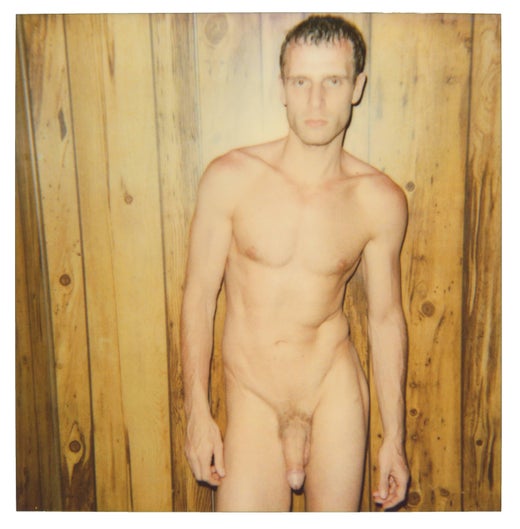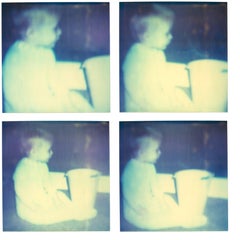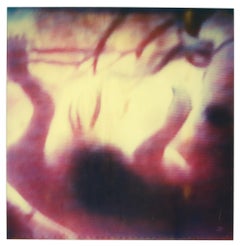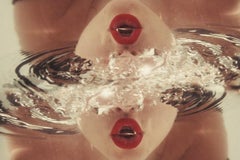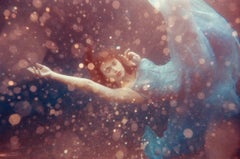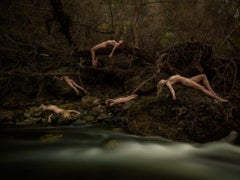Items Similar to Farewell (Haley and the Birds) - Contemporary, Abstract, Landscape, Polaroid
Want more images or videos?
Request additional images or videos from the seller
1 of 4
Stefanie SchneiderFarewell (Haley and the Birds) - Contemporary, Abstract, Landscape, Polaroid2013
2013
About the Item
'Farewell' (Haley and the Birds) - 2013
125x160cm,
Edition of 5,
analog C-Print, hand-printed by the artist on Crystal Fuji Archive Paper,
based on the Polaroid.
Signature label and certificate.
Artist inventory no. 17580.
Not mounted.
Stefanie Schneider interviewed for the Instantdreams movie.
When did you first decide to work with Polaroids? Why do Polaroids seem to be so well tuned to our (artistic) senses, perception and minds?
I started using expired Polaroid film in 1996. It has the most beautiful quality and encapsulates my vision perfectly. The colors on one hand, but then the magic moment of witnessing the image appear. Time seems to stand still, and the act of watching the image develop can be shared with the people around you. It captures a moment, which becomes the past so instantly that the decay of time is even more apparent; – it gives the image a certain sentimentality. The Polaroid moment is an original every time.
Why use a medium from the past?
For me, analog has always been there in the present. For the new generation, analog is interesting because it's new to them. I understand that people growing up in a digital age will wonder about its usefulness, but it's theirs to recover if they want to. When I first started working with Polaroid, it wasn't the past. It was a partially forgotten medium, but it existed nonetheless. It is mine by choice. There is no substitute for tangible beauty.
Is it imperfect?
The imperfect perfection in a “wabi-sabi” kind of way.
Wabi-sabi (侘寂) represents a comprehensive Japanese world view or aesthetic centered on the acceptance of transience and imperfection. The aesthetic is sometimes described as one of beauty that is imperfect, impermanent, and incomplete.
If an object or expression can bring about, within us, a sense of serene melancholy and a spiritual longing, then that object could be said to be wabi-sabi. Wabi-sabi nurtures all that is authentic by acknowledging three simple realities: nothing lasts, nothing is finished, and nothing is perfect.
Is the Polaroid photograph recognizable or even sometimes cliché?
Absolutely! There's something cliché about the way I'm showing the American Dream. I live it myself, trying to find perfection in an imperfect world. Reaching for the horizon. The dream is broken; the cliché tumbles. There are different ways to involve an audience. You could make movies like Harmony Korine's 'Gummo', a masterpiece in my view, which would estrange a large part of the audience. A certain film education is a prerequisite. Or you can start with clichés, the audience then feels safe, which lures them into the depth of your world without them even knowing it or understanding where exactly they are being led to. Appealing to emotions and the sub-conscious. Normal, Change, New Normal.
You continually revisit the landscape of the American West in your work. What draws you back to this scene?
Southern California represents a dream to me. The contrast of Northern Germany, where I grew up, to the endless sunshine of Los Angeles was what first attracted me. The American West is my dream of choice. Wide, open spaces give perspectives that articulate emotions and desires. Isolation feeds feelings of freedom or sometimes the pondering of your past. The High Desert of 29 Palms has very clear and vivid light, which is vital. Expired Polaroid film produces 'imperfections' that I would argue mirrors the decline of the American dream. These so called 'imperfections' illustrate the reality of that dream turning into a nightmare. The disintegration of Western society.
Are you playing with the temporality of the material and the value of the moment itself?
The value of the moment is paramount, for it is that moment that you're trying to transform. All material is temporary, it's relative, and time is forever.
Why does analog film feel more pure and intuitive?
It's tangible and bright and represents a single moment.
The digital moment may stay in the box (the hard drive / camera / computer etc.) forever, never to be touched, put into a photo album, sent in a letter, or hung on a wall. Printing makes it an accomplishment.
The analog world is more selective, creating images of our collective memory.
The digital worldwide clicking destroys this moment. The generation without memories due to information overload and hard drive failures. Photo albums are a thing of the past.
Why does it feel this way?
That's how the human instinct works.
When I was a child, every picture been taken was a special moment. Analog photographic film as well as Super-8 material were expensive treasures. My family's memories were created by choosing certain moments in time. There was an effort behind the picture. The roll of film might wait months inside the camera before it was all used. From there, the film required developing, which took more time, and finally, when the photos were picked up from the shop, the memories were visited again together as a family. Who knew then, how fleeting these times were. Shared memories was a ritual.
What's your philosophy behind the art of Polaroid pictures?
The 'obsolete' is anything but obsolete. Things are not always as they appear, and there are hidden messages. Our memories and our dreams are under-valued. It is there that real learning and understanding begins by opening yourself to different perspectives.
What inspired you to use stop motion cinematography?
My work has always resembled movie stills. I remember the first time I brought a box of Polaroids and slid them onto Susanne Vielmetter's desk (my first gallery). Instantly, it became apparent that there was a story to tell. The stories grew. It was undeniable to me, that the emerging story was where I was destined to go. I've made four short films before my latest feature film, "The Girl behind the White Picket Fence". This film is 60 minutes long with over 4000 edited Polaroids. It's important to remember that our sub-conscious fills in the blanks, the parts missing from the story allow a deeper and more personal experience for the viewer. That is, if you surrender yourself and trust me as the director to lead you somewhere you might not have been before.
Why do you think it is important to own art?
Nietzsche said "We have art in order not to die of the truth."
- Creator:Stefanie Schneider (1968, German)
- Creation Year:2013
- Dimensions:Height: 49.22 in (125 cm)Width: 63 in (160 cm)Depth: 0.04 in (1 mm)
- Medium:
- Movement & Style:
- Period:
- Condition:
- Gallery Location:Morongo Valley, CA
- Reference Number:1stDibs: LU652311103052
Stefanie Schneider
Stefanie Schneider received her MFA in Communication Design at the Folkwang Schule Essen, Germany. Her work has been shown at the Museum for Photography, Braunschweig, Museum für Kommunikation, Berlin, the Institut für Neue Medien, Frankfurt, the Nassauischer Kunstverein, Wiesbaden, Kunstverein Bielefeld, Museum für Moderne Kunst Passau, Les Rencontres d'Arles, Foto -Triennale Esslingen., Bombay Beach Biennale 2018, 2019.
About the Seller
4.9
Platinum Seller
Premium sellers with a 4.7+ rating and 24-hour response times
Established in 1996
1stDibs seller since 2017
1,023 sales on 1stDibs
Typical response time: 2 hours
- ShippingRetrieving quote...Shipping from: Morongo Valley, CA
- Return Policy
Authenticity Guarantee
In the unlikely event there’s an issue with an item’s authenticity, contact us within 1 year for a full refund. DetailsMoney-Back Guarantee
If your item is not as described, is damaged in transit, or does not arrive, contact us within 7 days for a full refund. Details24-Hour Cancellation
You have a 24-hour grace period in which to reconsider your purchase, with no questions asked.Vetted Professional Sellers
Our world-class sellers must adhere to strict standards for service and quality, maintaining the integrity of our listings.Price-Match Guarantee
If you find that a seller listed the same item for a lower price elsewhere, we’ll match it.Trusted Global Delivery
Our best-in-class carrier network provides specialized shipping options worldwide, including custom delivery.More From This Seller
View AllMeeting in front of Church (Sidewinder)
By Stefanie Schneider
Located in Morongo Valley, CA
Meeting in front of Church (Sidewinder) - 2007
Edition 2/5,
each 30x37cm, installed 30x160cm.
4 analog C-Prints, hand-printed by the artist, based on the 4 oirginal Polaroids.
Ce...
Category
Early 2000s Contemporary Figurative Photography
Materials
Archival Paper, Photographic Paper, C Print, Color, Polaroid
Untitled (Suburbia) featuring Radha Mitchell, analog
By Stefanie Schneider
Located in Morongo Valley, CA
Untitled (Suburbia), 2004, Edition of 3/3, 50x60cm, analog C-Print, hand-printed by the artist, based on a Polaroid, not mounted, signature label and Certificate, artist Inventory No...
Category
Early 2000s Contemporary Color Photography
Materials
Archival Paper, Photographic Paper, C Print, Color, Polaroid
White Plastic Bucket - Stay - with Ryan Gosling - from his Memory Sequence
By Stefanie Schneider
Located in Morongo Valley, CA
White Plastic Bucket (Stay), from Ryan Gosling's memory sequence.
2006, 85x85cm, 4 pieces, each 39x38.5cm, Edition 2/5,
analog C-Prints, printed by the artist on Fuji Archive Crysta...
Category
Early 2000s Contemporary Figurative Photography
Materials
Metal
Womb - Contemporary, Figurative, Woman, 21st Century, Polaroid, photograph, life
By Stefanie Schneider
Located in Morongo Valley, CA
Womb #02 - 2006,
56x55cm, Edition 2/5,
Analog C-Print, printed by hand by the artist on Fuji Archive Crystal Paper.
Based on a Polaroid
Certificate and Signature label
artist In...
Category
Early 2000s Contemporary Figurative Photography
Materials
Archival Paper, Photographic Paper, C Print, Color, Polaroid
Boccia (Beachshoot ) with Radha Mitchell - Polaroid, Contemporary, Women, Color
By Stefanie Schneider
Located in Morongo Valley, CA
Boccia (Beachshoot) - 2005
70x135cm installed, including gaps - 8 pieces, 30x30cm each,
almost sold out Edition of 100 plus 3 Artist Proofs.
Available 100/100, AP 1/3, AP 3/3.
Arc...
Category
Early 2000s Contemporary Color Photography
Materials
Archival Paper, Photographic Paper, C Print, Color, Polaroid
Aimless (Wastelands), triptych, analog, mounted - Polaroid, 21st Century, Color
By Stefanie Schneider
Located in Morongo Valley, CA
Aimless - It all began quite simply I was very happy - (Wastelands), triptych - 2003
Edition 2/5,
57 x 56 cm each, installed 57 x 180cm,
3 analog C-Prints, hand-printed by the art...
Category
Early 2000s Contemporary Color Photography
Materials
Metal
You May Also Like
Tyler Shields - Picnic, Photography 2018, Printed After
By Tyler Shields
Located in Greenwich, CT
Series: Suspense
Chromogenic Print on Kodak Endura Luster Paper
All available sizes and editions:
20" x 30"
30" x 40"
40" x 60"
48" x 72"
63" x 84"
Editions of 3 + 2 Artist Proofs
T...
Category
2010s Contemporary Color Photography
Materials
C Print
Price Upon Request
Tyler Shields - Submerged Mouths, Photography 2013, Printed After
By Tyler Shields
Located in Greenwich, CT
Series: Submerged
Chromogenic Print on Kodak Endura Luster Paper
All available sizes and editions:
20" x 30"
40" x 60"
48" x 72"
63" x 84"
Editions of 3 + 2 Artist Proofs
Tyler Shie...
Category
2010s Contemporary Color Photography
Materials
C Print
Tyler Shields - Holland, Photography 2013, Printed After
By Tyler Shields
Located in Greenwich, CT
Series: Submerged
Chromogenic Print on Kodak Endura Luster Paper
All available sizes and editions:
20" x 30"
40" x 60"
63" x 84"
Editions of 3 + 2 Artist Proofs
Tyler Shields is a p...
Category
2010s Contemporary Color Photography
Materials
C Print
Price Upon Request
Tyler Shields - Odysseus, Photography 2015, Printed After
By Tyler Shields
Located in Greenwich, CT
Series: Sirens
Chromogenic Print on Kodak Endura Luster Paper
All available sizes and editions:
20" x 30"
40" x 60"
48" x 72"
63" x 84"
Editions of 3 + 2 Artist Proof
The idea behi...
Category
2010s Contemporary Color Photography
Materials
C Print
Price Upon Request
Tyler Shields - Underwater Kiss II, Photography 2013, Printed After
By Tyler Shields
Located in Greenwich, CT
Series: Submerged
Chromogenic Print on Kodak Endura Luster Paper
All available sizes and editions:
20" x 30"
40" x 60"
48" x 72"
63" x 84"
Editions of 3 + 2 Artist Proofs
Tyler Shie...
Category
2010s Contemporary Color Photography
Materials
C Print
Tyler Shields - Underwater Kiss, Photography 2013, Printed After
By Tyler Shields
Located in Greenwich, CT
Series: Submerged
Chromogenic Print on Kodak Endura Luster Paper
All available sizes and editions:
20" x 30"
40" x 60"
63" x 84"
Editions of 3 + 2 Artist Proofs
Tyler Shields is a p...
Category
2010s Contemporary Color Photography
Materials
C Print

